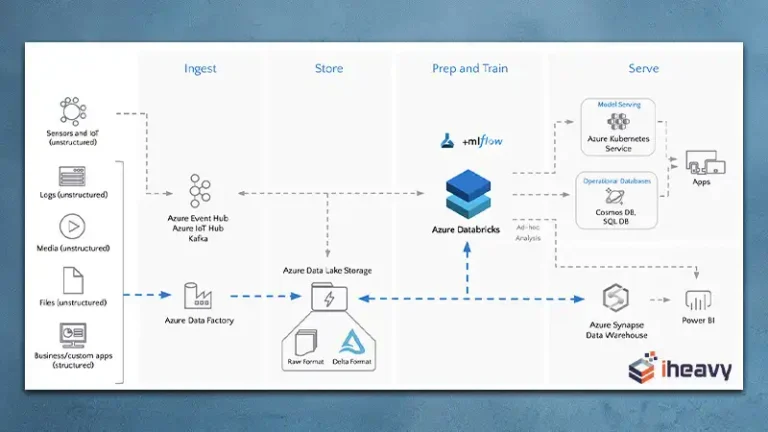How to Boost Mysql Scalability | 5 Effective Ways
With the increasing data and user demand, ensuring the scalability of your MySQL database has become crucial to maintain optimal performance. With this, you can handle growing amounts of data, traffic, and user requests with your database in MySQL. But how to boost MySQL scalability?
This is the most trending question among MySQL users and if you are one of them, then this article is just for you. You can simply boost MySQL scalability by optimizing MySQL queries, database schema, and server configuration.
In this article, we’ll explore five effective ways to boost MySQL scalability and handle your database’s growth effectively. So, what are you waiting for? Let’s explore them below!

5 Ways To Boost MySQL Scalability
There are a lot of scalability challenges we see with clients over and over. The list could easily include 20, 50, or even 100 items, but we shortened it down to the biggest five issues we see.
1. Tune those queries
By far the biggest bang for your buck is query optimization. Queries can be functionally correct and meet business requirements without being stress tested for high traffic and high load. This is why we often see clients with growing pains, and scalability challenges as their site becomes more popular.
This also makes sense. It wouldn’t necessarily be a good use of time to tune a query for some page off in a remote corner of your site, that didn’t receive real-world traffic. So, some amount of reactive tuning is common and appropriate.
Enable the slow query log and watch it. Use mk-query-digest, the great tool from Maatkit to analyze the log. Also, make sure the log_queries_not_using_indexes flag is set.
Once you’ve found a heavy resource-intensive query, optimize it! Use the EXPLAIN facility, use a profiler, look at index usage and create missing indexes, and understand how it is joining and/or sorting.
2. Employ Master-Master Replication
Master-master active-passive replication, otherwise known as circular replication, can be a boon for high availability, but also for scalability. That’s because you immediately have a read-only slave for your application to hit as well.
Many web applications exhibit an 80/20 split, where 80% of the activity is read or SELECT and the remainder is INSERT and UPDATE. Configure your application to send read traffic to the slave or rearchitect so this is possible. This type of horizontal scalability can then be extended further, adding additional read-only slaves to the infrastructure as necessary.
If you’re setting up replication for the first time, we recommend you do it using hotbackups. Here’s how.
Keep in mind MySQL’s replication has a tendency to drift, often silently from the master. Data can really get out of sync without throwing errors! Be sure to bulletproof your setup with checksums.
3. Use Your Memory
It sounds very basic and straightforward, yet there are often details overlooked. At least be sure to set these:
- innodb_buffer_pool_size
- key_buffer_size (MyISAM index caching)
- query_cache_size – though beware of issues on large SMP boxes
- thread_cache & table_cache
- innodb_log_file_size & innodb_log_buffer_size
- sort_buffer_size, join_buffer_size, read_buffer_size, read_rnd_buffer_size
- tmp_table_size & max_heap_table_size
4. RAID Your Disk I/O
RAID5 is slow for inserts and updates. It is also almost non-functional during a rebuild if you lose a disk. Very very slow performance. What should you use instead?
RAID 10 mirroring and striping, with as many disks as you can fit in your server or raid cabinet. A database does a lot of disk I/O even if you have enough memory to hold the entire database.
Why? Sorting requires rearranging rows, as does group by, joins, and so forth. Plus, the transaction log is disk I/O as well!
Are you running on EC2? In that case, EBS is already fault-tolerant and redundant. So, give your performance a boost by striping only across a number of EBS volumes using the Linux md software raid.
5. Tune Key Parameters
These additional parameters can also help a lot with performance.
innodb_flush_log_at_trx_commit=2
This speeds up inserts & updates dramatically by being a little bit lazy about flushing the innodb log buffer. You can do more research yourself but for most environments this setting is recommended.
innodb_file_per_table
Innodb was developed like Oracle with the tablespace model for storage. Apparently, the kernel developers didn’t do a very good job. That’s because the default setting to use a single tablespace turns out to be a performance bottleneck.
Contention for file descriptors and so forth. This setting makes innodb create tablespace and underlying datafile for each table, just like MyISAM does.
Frequently Asked Questions (FAQs)
What Is Scalability in MySQL?
Scalability is crucial to prevent your database from collapsing under an increased amount of traffic. a scalable database can handle large data and big queries in a short period. When it may take too much time reading and writing big data, a scalable database can significantly reduce the time.
How To Make MySQL Database Scalable?
To make your MySQL scalable, you need to handle current requests without duplicating IDs and also multiple masters in MySQL to scale your operations horizontally.
Conclusion
There is no need to tell the importance of scalability in MySQL. For that, all the 5 most efficient ways to boost your MySQL scalability are explained in this article and we hope, a combination of these strategies might be the most effective solution for your specific case. For other queries regarding this topic, don’t hesitate to ask in our comment box below. Thanks for reading!





